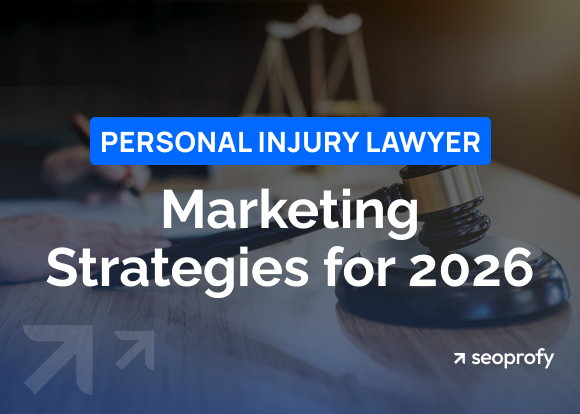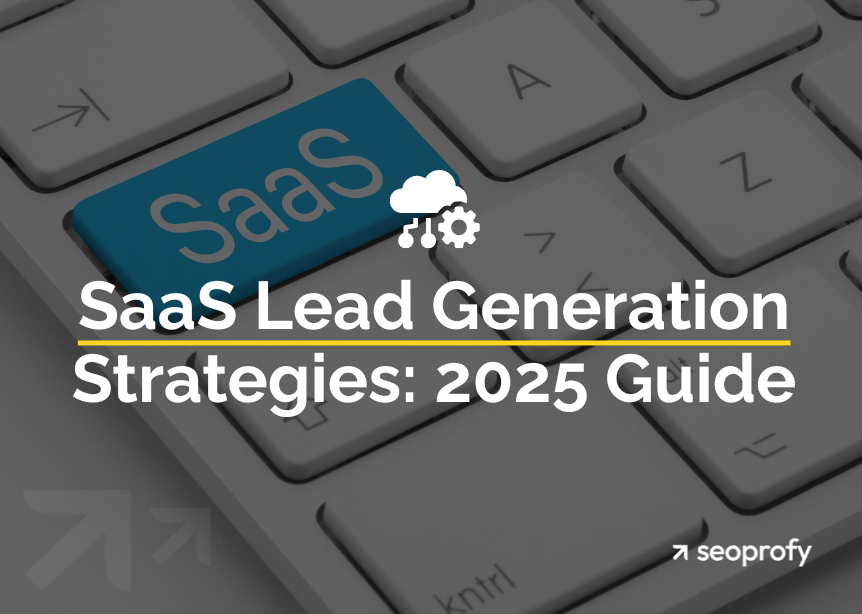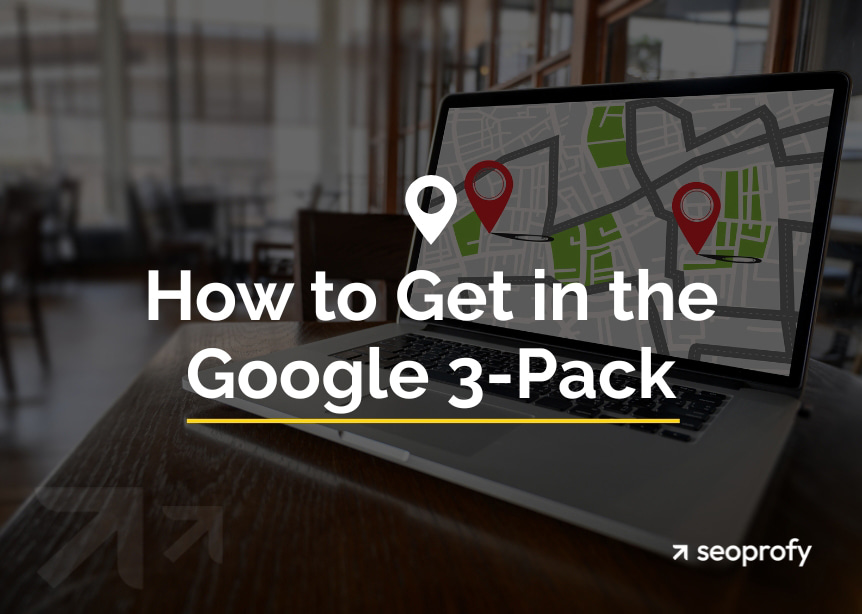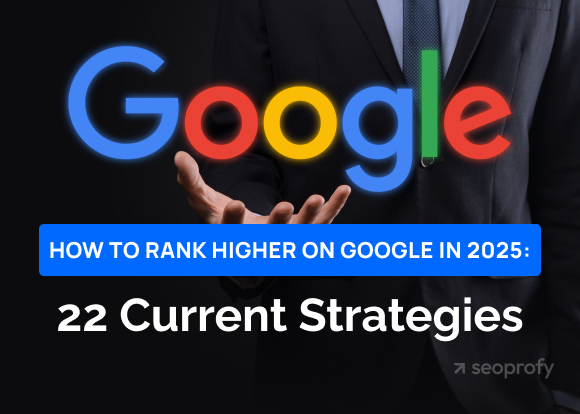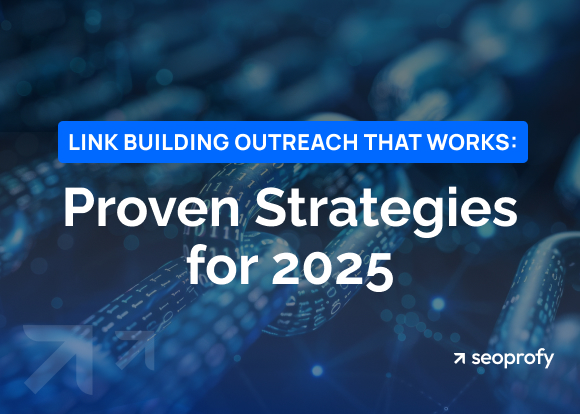Every online business strives for steady sales growth — yet many eCommerce stores hit a plateau. You can pour money into ads for short-term gains, or focus on sustainable growth with proven SEO-driven eCommerce lead generation strategies.
Any business aims to achieve a stable increase in sales, but what should you do if your online shop can’t break the deadlock? Well, you can spend hundreds if not thousands of dollars on ads, or you can opt for long-standing success ensured by the best SEO strategies for eCommerce lead generation.
These methods are unique and may be applied in any niche. Using them, you’ll not only boost organic traffic but also convert it into qualified leads and customers. Once your eCommerce lead generation strategy is optimized, your store can maintain high performance with minimal ongoing effort.
- You can ensure 52.6% more engagement using interactive content.
- Over 70% of potential leads abandon their shopping carts just before completing the purchase.
- 64% of buyers are ready to pay more for your products if your brand reflects their values.
- Tools like Hotjar and Microsoft Clarity provide heatmaps of your online store for advanced analysis of customer behavior.
What is a Lead in eCommerce?
A lead in eCommerce is a visitor who has shown a clear interest in your products or services and taken an action that signals purchase intent. This could include signing up for your newsletter, adding items to the cart, following your social media channels, or downloading a buying guide.
Effective eCommerce lead generation focuses on identifying these high-intent users early and nurturing them through the right channels. Unlike general traffic, leads have already moved from awareness to consideration — they’re evaluating your offer. Your goal is to guide them from interest to decision through optimized content, personalized experiences, and trust signals.
How to Determine Your Ideal eCommerce Lead?

Before applying advanced eCommerce lead generation strategies, you need to identify your ideal lead — the type of buyer most likely to purchase from you with minimal friction.
Start by building a detailed buyer persona that goes beyond demographics. Alongside basic details like age, income, location, education, and key pain points, include:
- Psychographic traits: lifestyle, motivations, personal values, and purchase drivers.
- Behavioral data: browsing habits, preferred devices, interaction patterns, and content types they engage with most.
- Decision factors: price sensitivity, urgency, and what triggers conversion.
Understanding these factors helps you tailor messages, personalize offers, and streamline the customer journey for higher lead quality and faster conversions.
Why Is eCommerce Lead Generation Different?
Traditional tactics aim to gather potential customers’ contact information to sell them a product later through a long nurturing process. At the same time, eCommerce lead generation strategies create a desire to make a purchase immediately through attractive, time-limited offers and a simple customer journey.
However, consider that there is no similar success formula for each business. While lead generation for B2B eCommerce still requires a lot of time for customer acquisition, this process is way faster for B2C online stores. Thus, if you want to avoid problems with eCommerce lead quality, you must tailor the strategies provided below to your specific niche and customers’ preferences.
Why Should Your eCommerce Brand Invest in Lead Generation?
When you know how to generate leads for eCommerce, you can reach buyers who need only a gentle nudge to turn into customers. Therefore, you’ll ensure faster growth of your business due to significant advantages:
- Enhanced ROI: You can save a lot of money and time by targeting the right potential buyers who are genuinely interested in your products or services.
- Boosted brand awareness: A proper lead generation strategy will not only increase your sales but also help you create a loyal community and increase your reputation.
- Audience research: Creating personalized lead generation strategies will help you understand your audience, ultimately resulting in better relationships with your clients.
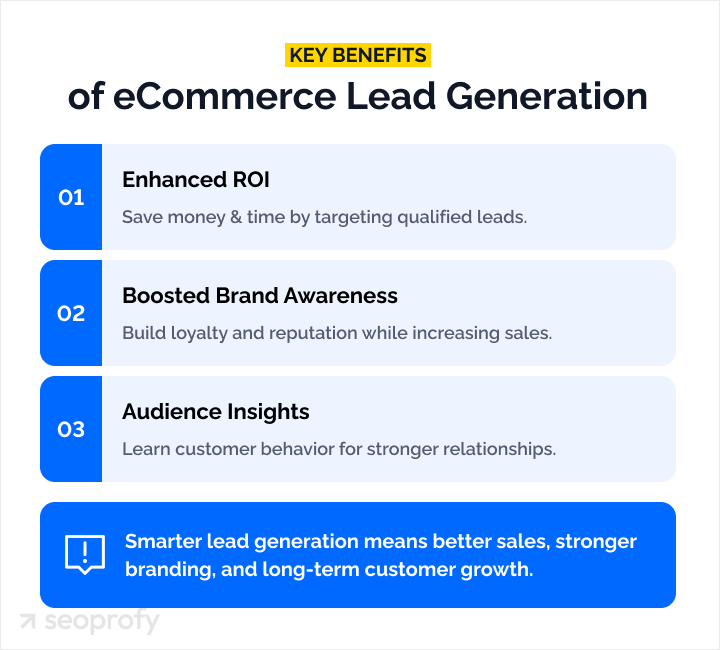
Do you want to consolidate the success of the implemented lead generation strategies? Check our eCommerce marketing stats to find out the most effective trends and useful data to accelerate your business growth.
20 Proven eCommerce Lead Generation Strategies with Examples
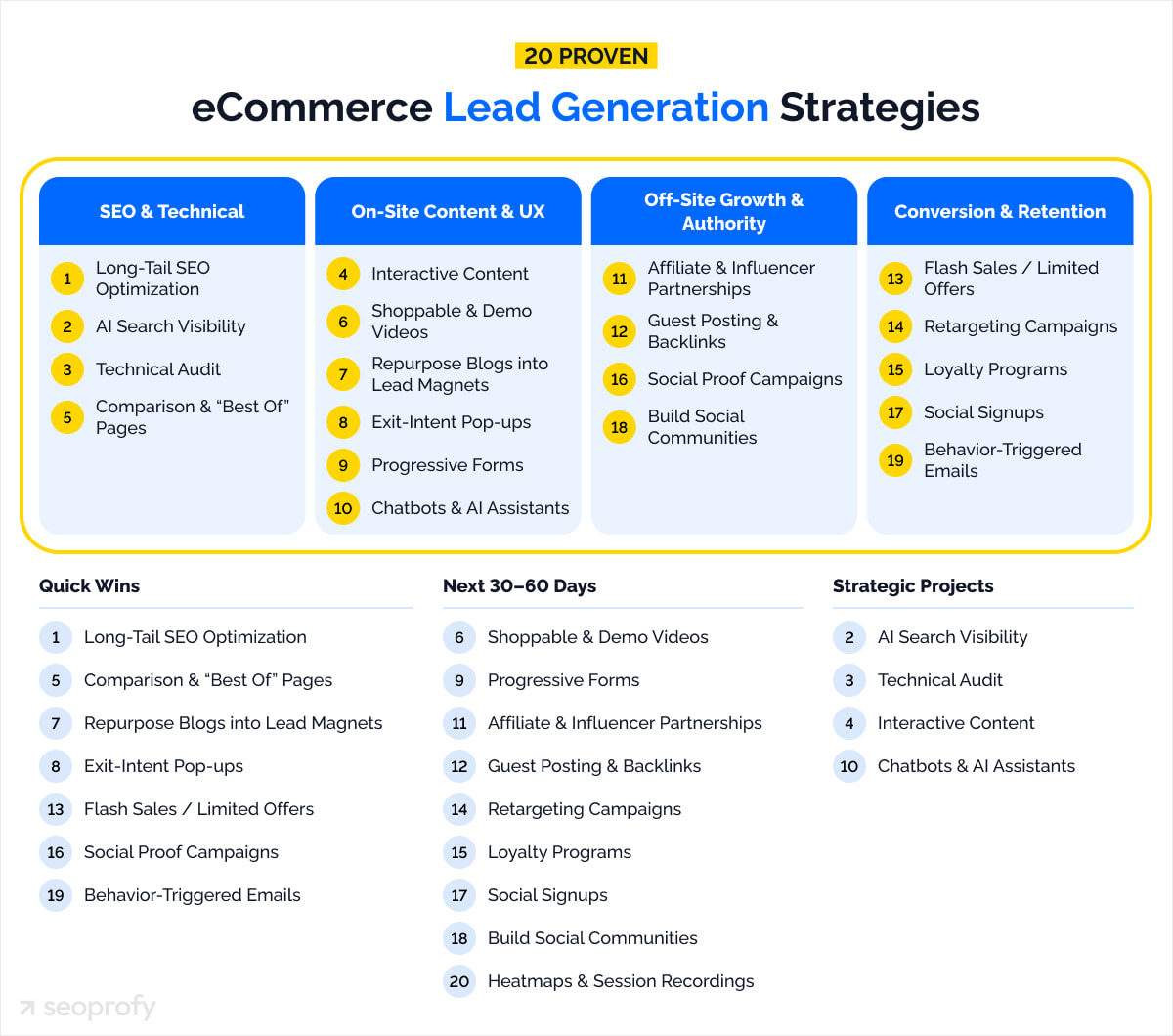
Our team prepared the list of the ultimate strategies to generate eCommerce sales leads. For your convenience, we’ve divided them into categories and estimated the complexity of their implementation.
#1. Optimize Product & Category Pages for Long-Tail Keywords
Category: SEO
Complexity: Easy
You can boost both revenue and rankings with the help of a proper eCommerce SEO strategy. And once you start this process, you’ll need to identify appropriate keywords and add them to your product descriptions, blog posts, category pages, and metadata.
Probably, you’ll want to focus on targeted terms with the highest search volume. However, if you want to boost your lead generation, consider long-tail keywords, which offer the following advantages:
- Higher conversions occur as they attract more qualified traffic.
- Less competition, which means it’s easier to rank higher.
- Efficient marketing budget management in paid search due to lower cost per acquisition and high click-through rates.
For comprehensive keyword research, it’s better to opt for special tools like Ahrefs and Semrush. Alternatively, you can discover long-tail keywords through the suggestions in Google Autocomplete and People Also Ask sections by entering a term related to your business or product:

#2. Use AI Search Visibility
Category: SEO & AI
Complexity: Hard
Since the development of AI technologies, popular platforms, such as ChatGPT, have been rapidly growing their audiences. Moreover, now when a person searches for information related to a certain product, the first thing they see is likely to be a result from AI Overviews:
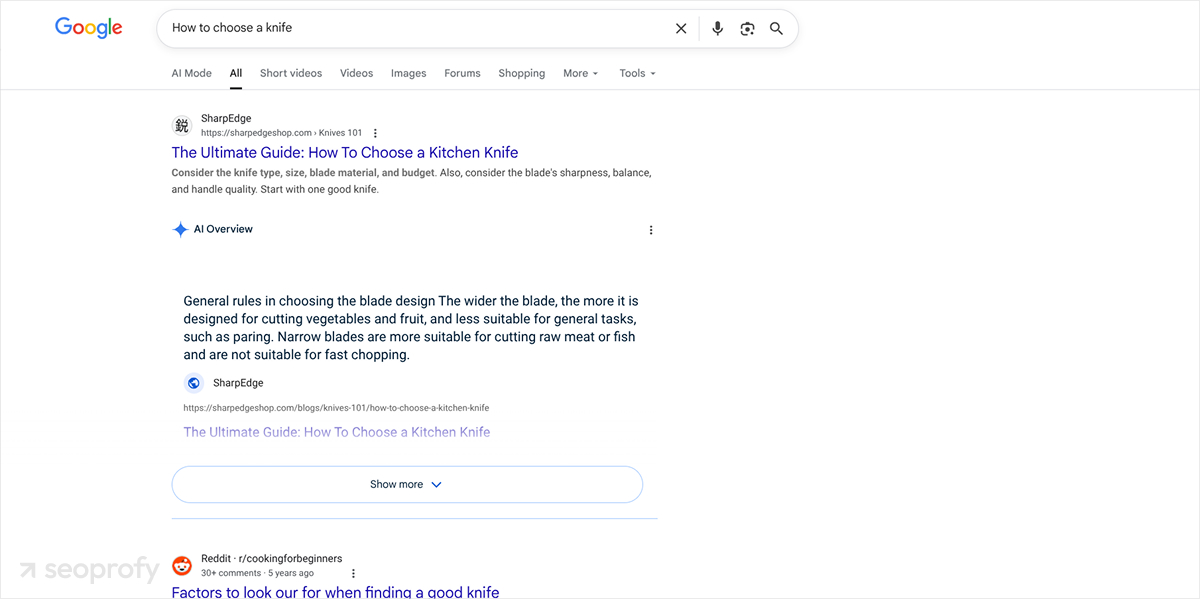
One of the smartest lead generation strategies is optimizing your website to maintain high rankings and appeal to AI-powered algorithms. This challenging process requires:
- Proper structuring: When AI algorithms prepare their answers, they prefer taking information from the pages with a clear block-level structure.
- Schema markup: Adding a standardized code like JSON-LD to your HTML also helps AI algorithms better understand your content’s context.
- Content optimization: Focus on creating unique content with well-organized lists, tables, and FAQ sections.
You can accelerate the optimization with the help of powerful AI SEO tools, such as ChatGPT and Semrush. Use their capabilities to analyze your competitor’s content, create meta tags, and improve blog posts to rank high in search results and AI-driven answers.
#3. Analyze Your eCommerce Site’s Technical Side
Category: SEO & Webdev
Complexity: Hard
Even if you sell top-quality products and your content attracts AI algorithms like a magnet, you still may lose leads due to numerous technical issues. First of all, you need to conduct a comprehensive SEO audit to identify these problems. Also, you can opt for Google’s PageSpeed Insights to evaluate the performance of your site:

Your eCommerce website must be perfectly optimized for both desktop browsers and mobile devices, offering high page loading speed, clear UI, and straightforward navigation. As a rule, fixing the discovered technical issues is a challenging process, which requires specific knowledge and experience. Thus, you may need to opt for professional assistance.
#4. Build Interactive Content
Category: On-site Content
Complexity: Medium/Hard
Enhancing your visitors’ experience with the help of calculators, quizzes, surveys, and polls is one of the most effective lead generation strategies. According to digital marketing research, interactive elements ensure 52.6% more engagement than static content.
Start by analyzing your competitors and popular niche websites to come up with ideas. Afterward, select the most appropriate options, tailor them to the specific needs of your leads, and inspire them to make a purchase. For example, Sephora saw a 25% increase in add-to-cart rate and a 35% conversion growth after the introduction of its interactive Virtual Artists:
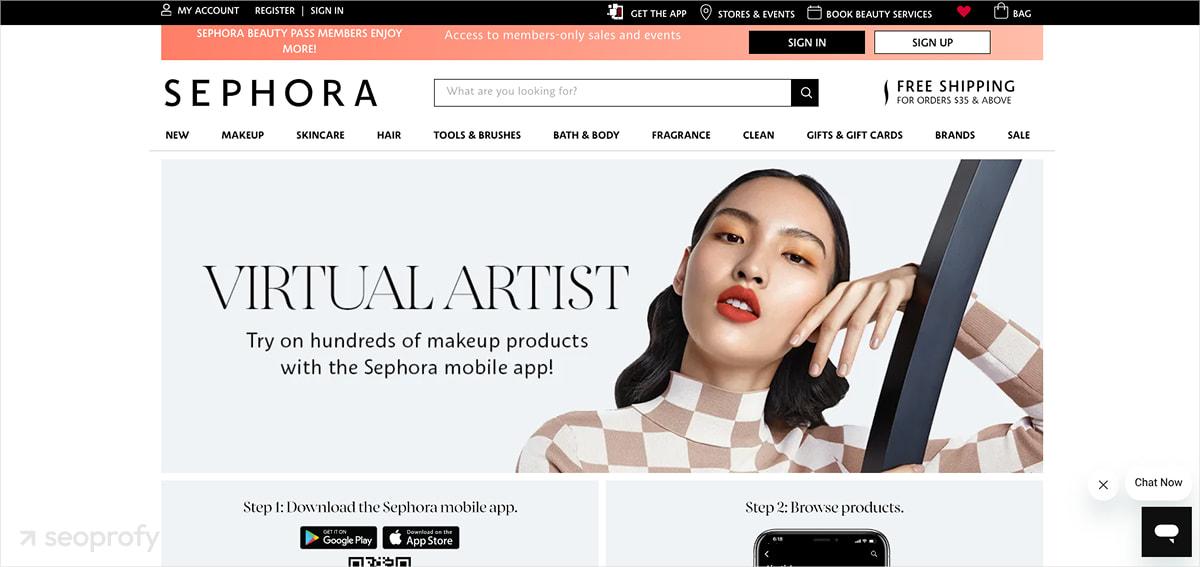
#5. Create Comparison Guides & “Best Of” Pages
Category: SEO + Content Marketing
Complexity: Easy
Even if a person is likely to buy the product your online eCommerce store sells, you still must persuade them to choose your brand instead of competitors. That’s where your comparison guides or “Best Of” pages come into play, offering the visitors the best options, considering their needs and budget. Check how Victorinox uses this content format, assisting its clients in choosing the best products in various categories:

Publish such content as a part of your eCommerce lead generation strategy to help your new customers make informed purchasing decisions. Plus, in some of these guides, you can highlight the significant advantages of your products in comparison to those offered by your competitors.
#6. Use Video Demonstrations & Shoppable Videos
Category: On-site & SMM
Complexity: Medium
According to the digital marketing statistics, 64% of buyers are likely to make a purchase after watching a branded social media video. Further, this type of content delivers the highest ROI for eCommerce businesses.
Using videos, you can immediately demonstrate your product’s usage through real-life people, which will help a lead understand whether they indeed need it. You can add short formats or entire YouTube reviews along with the photos on the product pages, or create an entire video gallery just like IKEA:
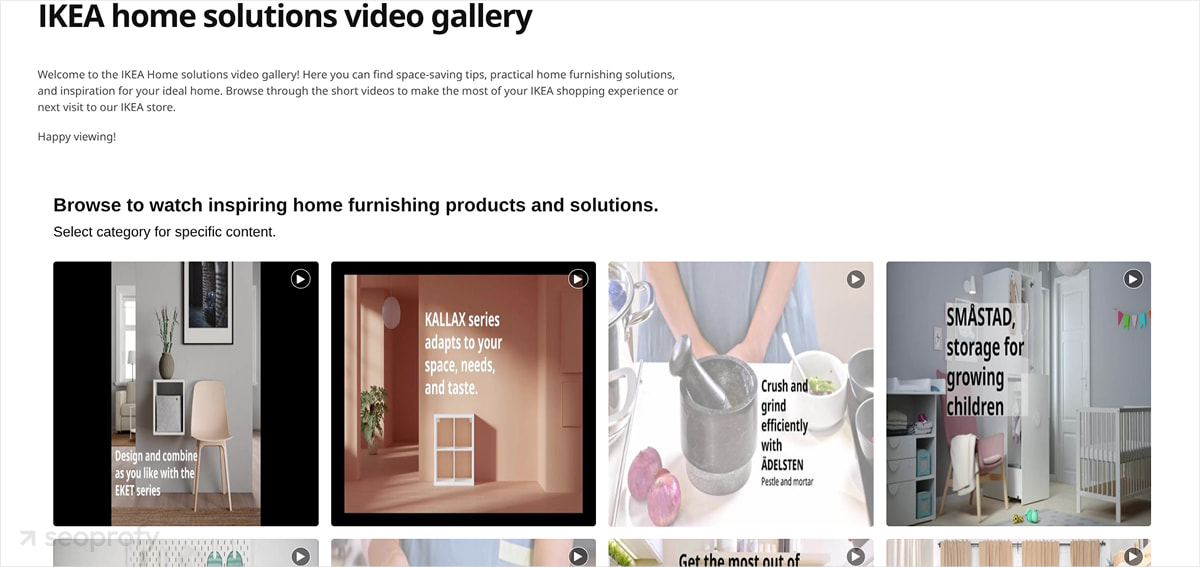
#7. Repurpose Blogs into Lead Magnets
Category: Content
Complexity: Easy
A lead magnet is a valuable piece of content that you send to your potential customers in exchange for their email addresses. The easiest and fastest way to boost your lead generation is to turn the existing blog posts into webinars, PDF guides, checklists, or entire eBooks. This practice is widespread among the brands in different niches, such as Furniture Academy, which provides its leads with a comprehensive Furniture Buying Guide:
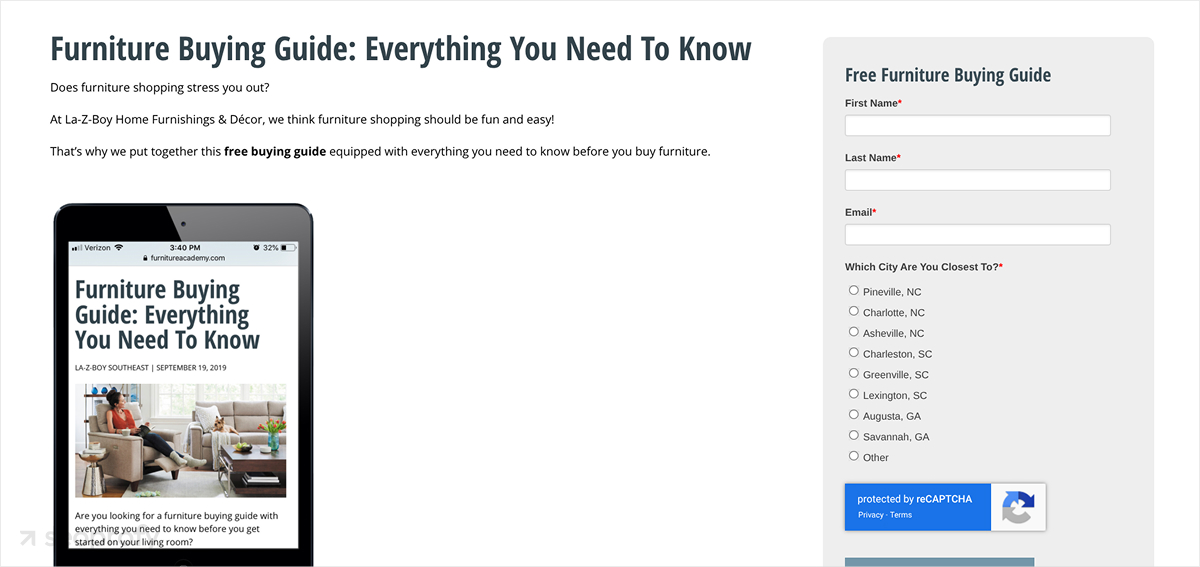
You can check your competitors’ websites to discover ideas for your lead magnets. Also, you can use the insights related to your prospective clients’ search intent, which you’ve received from your eCommerce keyword research.
#8. Add Smart Exit-Intent Pop-ups with Personalization
Category: On-site
Complexity: Easy
Shopping cart abandonment is one of the most widespread lead generation problems. Its average documented rate is 70.19%, indicating that online shops lose a significant number of customers right before they click the “Purchase” button.
One of the most efficient ways to prevent leads from leaving your online shop is to use exit intent pop-ups. These dynamic messages appear when a user is about to leave your site. They include welcome discounts or special offers tailored to a specific person’s preferences, inspiring them to stay and complete the purchase. For instance, here you can see Omen Clothing’s pop-up for new clients, which offers a 10% discount on their first order:
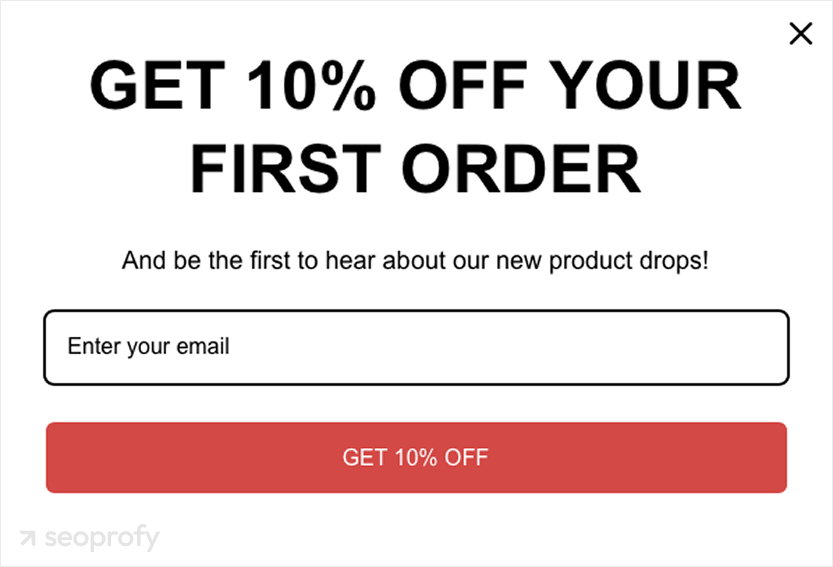
#9. Introduce Progressive Forms
Category: On-site
Complexity: Medium
You can use progressive forms to gradually build a complete lead’s profile, without overwhelming your clients with the necessity to provide a lot of information at once. You can implement this method via a gamified quiz like Warby Parker’s Take the Home Try-On quiz:

By answering a couple of easy questions, a buyer gets personal offers based on their preferences. There is a stronger chance that a person will purchase such products as they fit their tastes. Plus, you may also ask them to provide an email address during the quiz to send them new personalized offers in the future.
#10. Integrate On-Site Chatbots & AI Assistants
Category: On-site & AI
Complexity: Medium/Hard
Nearly 55% of the buyers in the US feel positive toward businesses that use AI-bots on their sites. These assistants can ensure a seamless user experience and boost lead generation through faster responses and personalized offers. Further, online shops like Underoutfit customize these bots, making them fit the brand’s tone of voice and style:

Unfortunately, designing your website with an AI-powered assistant requires specific technical knowledge. Further, if you use a CMS like WordPress, you’ll need to spend extra funds on plugins like Tidio and WoowBot.
#11. Establish Affiliate & Influencer Partnerships
Category: Off-site / Partnerships
Complexity: Medium
You can establish affiliate partnerships with influencers from your niche to increase visibility and lead generation. Start by discovering potential partners via platforms like ShareASale and CJ Affiliate. It’s essential to choose an online influencer with an audience relevant to your specific niche and region.
Once you find the right partners, provide them with your product guides, promotional content, or branding guidelines, so they can advertise your online business. Also, you can focus on creating co-created content and exclusive offers for the influencer’s audience. For example, you can look at the collaboration between Daniel Wellington and Hailey Bieber. The brand offered the blogger’s subscribers a special promo code to inspire them to visit their shop and get a 15% discount:

#12. Guest Post + Build Backlinks for Lead Funnels
Category: Off-site SEO
Complexity: Medium
A smart combination of guest posting and proper backlink placement is one of the most effective eCommerce lead generation strategies. Here are simple steps for you to take to implement it successfully:
- Discover popular websites related to your niche that are eager to post your content.
- Add a link to your lead magnets in the guest posts or author bio.
- After someone reads your content and clicks the anchor for more helpful information, ask them to sign up for your newsletter.
Thus, with the help of efficient link building for eCommerce, you can slowly guide a person through your sales funnel. For instance, you can nurture them with personalized messages and product recommendations.
#13. Introduce Flash Sales and Limited-Time Offers
Category: Conversion Rate Optimization (CRO)
Complexity: Medium
Limited-time offers and promotions create urgency and fear of missing out, making your products more desirable for your leads. There are many ways to implement this tactic, including:
- Running flash sales
- Offering limited-stock products
- Announcing holiday or seasonal campaigns
You can combine several of the mentioned tactics during your eCommerce conversion rate optimization. Also, don’t forget to follow the examples of businesses, such as Boohoo, to create attractive personalized banners for your season-limited offers:

#14. Run Retargeting Campaigns
Category: PPC
Complexity: Medium
Retargeting is an integral part of any successful eCommerce PPC lead generation strategy. During these advertising campaigns, you create ads for users who have visited your shop without making a purchase. This lead generation process involves the implementation of cookies, which can show which products a person has watched but hasn’t bought.
Using this information, you can show the user a personalized discount featuring the exact product they’ve already reviewed. This method significantly increases the chances of a visitor making a purchase, and is popular among different eCommerce brands, including OddBalls:
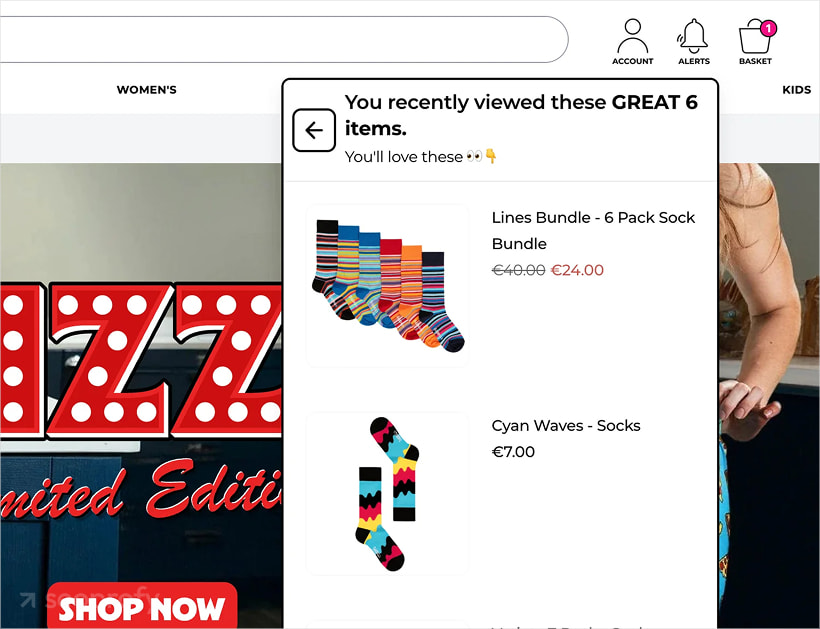
#15. Launch Loyalty Programs with Various Perks
Category: Conversion Rate Optimization (CRO)
Complexity: Medium
Encourage your buyers to continue making purchases by rewarding them with unique benefits and discounts offered by your customer loyalty program. In addition to an increased customer retention rate, you’ll also improve your chances of converting one-time shoppers into your regular clients.
eCommerce store owners can use various elements, such as a point-based reward system, tiered benefits, or exclusive offers, to make their loyalty programs more exciting. And if you need a flash of inspiration, check out a great example from Nike:
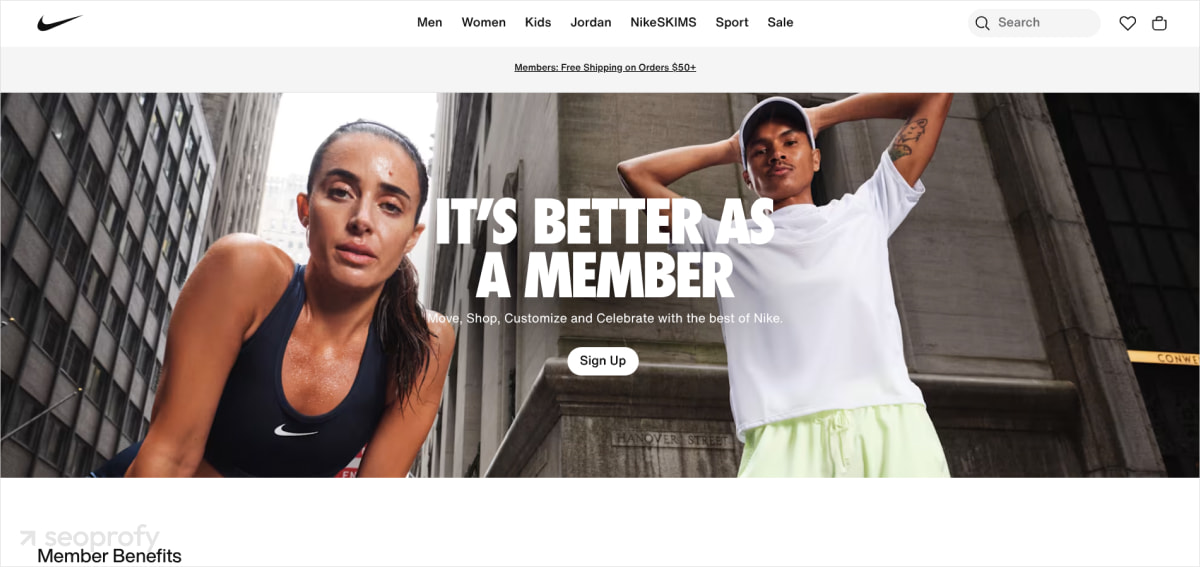
#16. Drive Social Proof Campaigns
Category: SMM
Complexity: Easy
While remaining one of the easiest lead generation for eCommerce strategies, driving social proof campaigns is still efficient due to its significant influence on consumer behavior. You can encourage your site visitors to purchase and build brand credibility by showcasing your customers’ testimonials and reviews. Strategically placing user-generated content on your homepage and product pages can help reassure a potential client to buy your product.
Also, you can inspire your loyal customers to share reviews about your brand on their social media accounts, like Instagram and TikTok. For instance, GoPro offers pleasant rewards, such as new gear and cash awards, to the clients who participate in its #GoProAwards challenge:

#17. Enable Social Media Signups
Category: SMM
Complexity: Medium
26% of people abandon their cart due to the mandatory account creation. Thus, one of the smartest lead generation strategies is to simply allow a guest checkout and enable social account signup as an alternative option.
Thus, you won’t scare your shoppers with the necessity to spend their time creating passwords and setting up their accounts. At the same time, you may still get valuable information once they swiftly register using their Instagram or Google account.
#18. Build Social Communities
Category: SMM / Community
Complexity: Medium
Modern buyers don’t simply value the quality of your products and services but also your company’s vision. Moreover, 64% of the US buyers are ready to pay more if your brand reflects their values.
By creating a large community on social media platforms, you won’t simply boost your online presence and credibility. You’ll create a loyal core of your target audience that will attract potential customers. Further, staying active on social media and interacting with your clients there will help you discover more about their preferences, pain points, and experience with your products.
#19. Set up Behavior-Triggered Emails
Category: Email Marketing
Complexity: Easy/Medium
Behavior-triggered emails are messages automatically sent by a special platform, like HubSpot, to a specific customer based on their actions. They are great for your lead generation efforts because they offer high relevancy, being triggered by real-time events. There are different types of these emails, including:
- Welcome emails
- Abandoned cart notifications
- Confirmation messages
- Re-engagement offers
#20. Use Heatmaps & Session Recordings to Improve Funnel Flow
Category: CRO / On-site
Complexity: Medium
When dealing with different marketing problems, such as retargeting challenges in eCommerce or a high cart abandonment rate, you can opt for advanced analytical tools:
- Heatmaps: Services like Hotjar or Microsoft Clarity use a color-coded overlay to show placements on your website where users click, move their mouse, and scroll. Thus, you can estimate how they interact with the site’s UI elements and whether something needs to be changed.
- Session recordings: Tools like Wix and Contentsquare provide video replays of your users’ sessions. Using them, you can get the first-person experience of using your online shop to better understand the behavior of your clients.
Thoroughly analyze the received data to identify the weakest points in your customer journey. Afterward, begin addressing the discovered flaws using the strategies mentioned above.
Lead Generation for eCommerce is Easy with SeoProfy
Even with the mentioned strategies, improving lead generation for eCommerce still remains a challenging task. You may still face issues that require a unique approach, while tailoring time-tested methods to your specific audience and niche may require deep marketing experience. Luckily, you can always rely on SeoProfy and our professional eCommerce SEO services. After a free consultation, we’ll develop a custom strategy to make your sales and rankings skyrocket.



